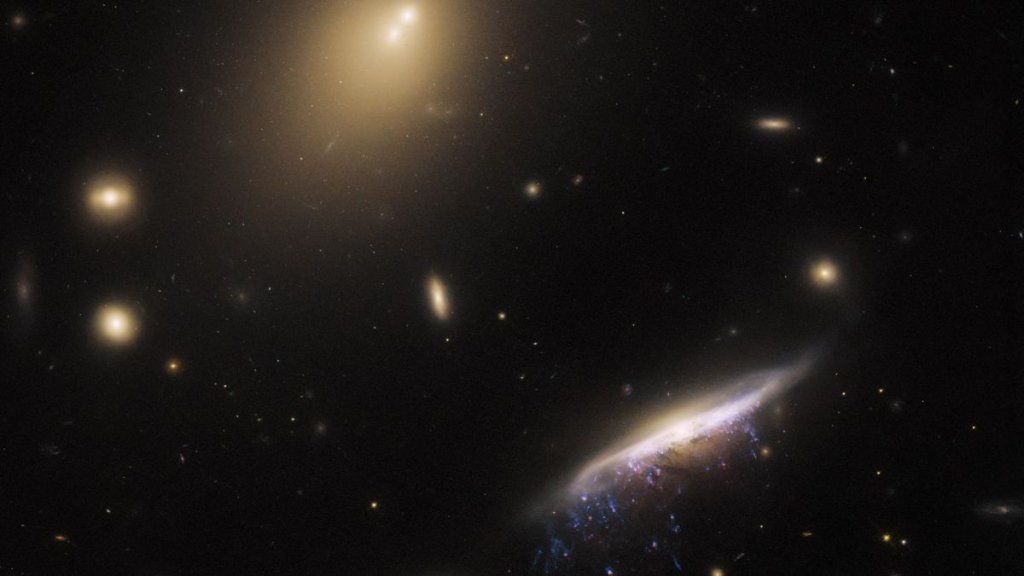
Hubble telescope captures galactic jellyfish with bright tendrils of star formation (photo) (Image Credit: Space.com)
A distant spiral galaxy boasts bright streams of star-forming gas dripping from its central disk like tentacles of a jellyfish in a new Hubble Space Telescope photo.
Located over 800 million light-years from Earth in the constellation Pegasus, JW100 is an example of a “jellyfish galaxy” — a type of galaxy that exhibits long tendrils illuminated by clumps of star formation, which appear to be streaming away from the galaxy’s main body, giving it a jellyfish-like appearance.
These tendrils form through a process called ram pressure stripping, which occurs when galaxies encounter the diffuse gas that pervades galaxy clusters, according to a statement (opens in new tab) from the European Space Agency (ESA), which released the photo on Monday (March 20).
Related: The best Hubble Space Telescope images of all time!
“As galaxies plough through this tenuous gas, it acts like a headwind, stripping gas and dust from the galaxy and creating the trailing streamers that prominently adorn JW100,” ESA officials wrote in the statement.
The Hubble Space Telescope captured JW100 edge-on, showing the galaxy’s central bulge composed of stars, gas, and dust, and its bright spiral arms. Patchy blue trails can be seen extending below the galaxy, resembling tentacles of a jellyfish.
JW100 is located in the lower right of the Hubble image, surrounded by six small elliptical galaxies and a much larger elliptical galaxy, called IC 5338, which is the bright area of diffuse light near the top of the image. These galaxies all belong to the same cluster. IC 5338, the brightest galaxy in the galaxy cluster, is classified as a cD galaxy and has two cores.
“It’s not unusual for cD galaxies to exhibit multiple nuclei, as they are thought to grow by consuming smaller galaxies, the nuclei of which can take a long time to be absorbed,” ESA officials said. “The bright points of light studding its outer fringes are a rich population of globular clusters.”
The Hubble image was taken using the space telescope’s Wide Field Camera 3 as part of an initiative to study star formation in the tendrils of jellyfish galaxies.
“These tendrils represent star formation under extreme conditions, and could help astronomers understand the process of star formation elsewhere in the universe,” ESA officials said in the statement.
Follow Samantha Mathewson @Sam_Ashley13 (opens in new tab). Follow us @Spacedotcom (opens in new tab), or on Facebook (opens in new tab) and Instagram (opens in new tab).





